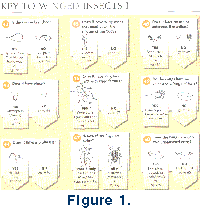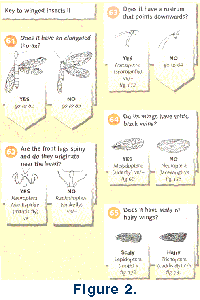Amber
by Andrew Ross
Harvard
University Press, 1998, 73 p.
ISBN 0-674-01729-3, $12.95

Amberby Andrew Ross Harvard
University Press, 1998, 73 p. |
 |
Amber, the subject and title of the new book by Andrew Ross, has exploded into modern culture again, since that now famous film, which I’m sure needs no mention. In fact, as the author states in the preface of his book, it was due to the interest generated in the public by the film that he was given the job of cleaning, interpreting, and organizing the British Museum of Natural History’s collection of Amber. Andrew is the Curator of Arthropods in the department of Palaeontology of that museum.
The book is full of lavish photographs and illustrated throughout. It takes us into the world of amber, starting with what amber actually is and describing the trees from which it comes, being followed up by the physical, chemical, and visual characteristics. The chapter entitled, ‘Fake Amber,’ tells of the substitutes that are used, what to look for, and tests that can be carried out to authenticate the amber. This chapter sent me off to scrutinize my own collection, planning all manner of revenge on anyone who had dared to trick me. Having checked my pieces, which I am happy to report, have all passed the tests; I return to the next few pages, which describe some of the uses of amber and the countries of origin.
 The
next part of the book moves into describing the inclusions found in the amber.
Now we enter the part that most people relate to with this material and how the
value of a piece of amber can be affected. Here, there is some beautiful
photography of insects and plants with superb photos of arthropods. Of course,
the book could not be complete without a section on DNA, which also includes a
biogeography of the animals and plants. The final sections, which take up a good
proportion of the book, are a number of keys to identifying arthropods, bugs,
and winged insects. See Fig. 1 and Fig.
2 for examples.
The
next part of the book moves into describing the inclusions found in the amber.
Now we enter the part that most people relate to with this material and how the
value of a piece of amber can be affected. Here, there is some beautiful
photography of insects and plants with superb photos of arthropods. Of course,
the book could not be complete without a section on DNA, which also includes a
biogeography of the animals and plants. The final sections, which take up a good
proportion of the book, are a number of keys to identifying arthropods, bugs,
and winged insects. See Fig. 1 and Fig.
2 for examples.  At
this point I must say that I have a 13 year-old daughter, who is mad on bugs,
insects, and microscope work; needless to say this book kept disappearing over
the last few months and at times it was a fight to retrieve it to complete this
review.
At
this point I must say that I have a 13 year-old daughter, who is mad on bugs,
insects, and microscope work; needless to say this book kept disappearing over
the last few months and at times it was a fight to retrieve it to complete this
review.
In conclusion, I can say this is an enjoyable book and can be read by both older children and adults. It is an excellent reference book and will have uses in universities, school libraries, and museums. For me, and of course, speaking for my daughter, this is not one of those books you read then put on a shelf. With the many keys to identification, it can be used as a tool for years to come.
Copyright: Palaeontologia Electronica, 15 April 2000